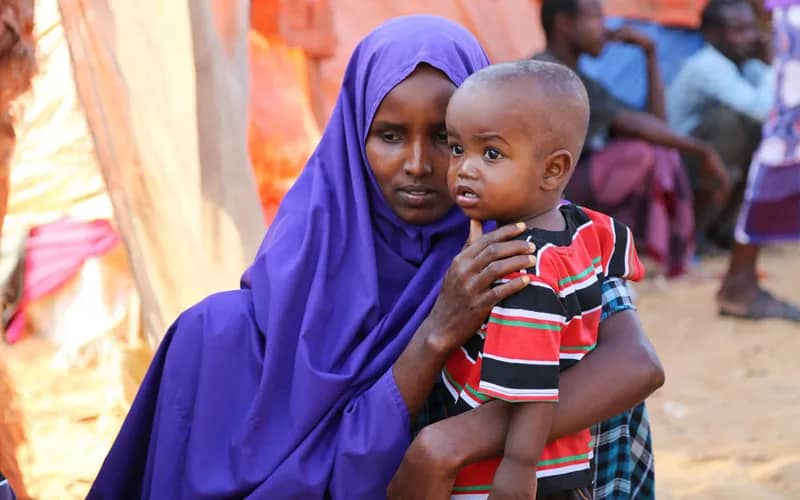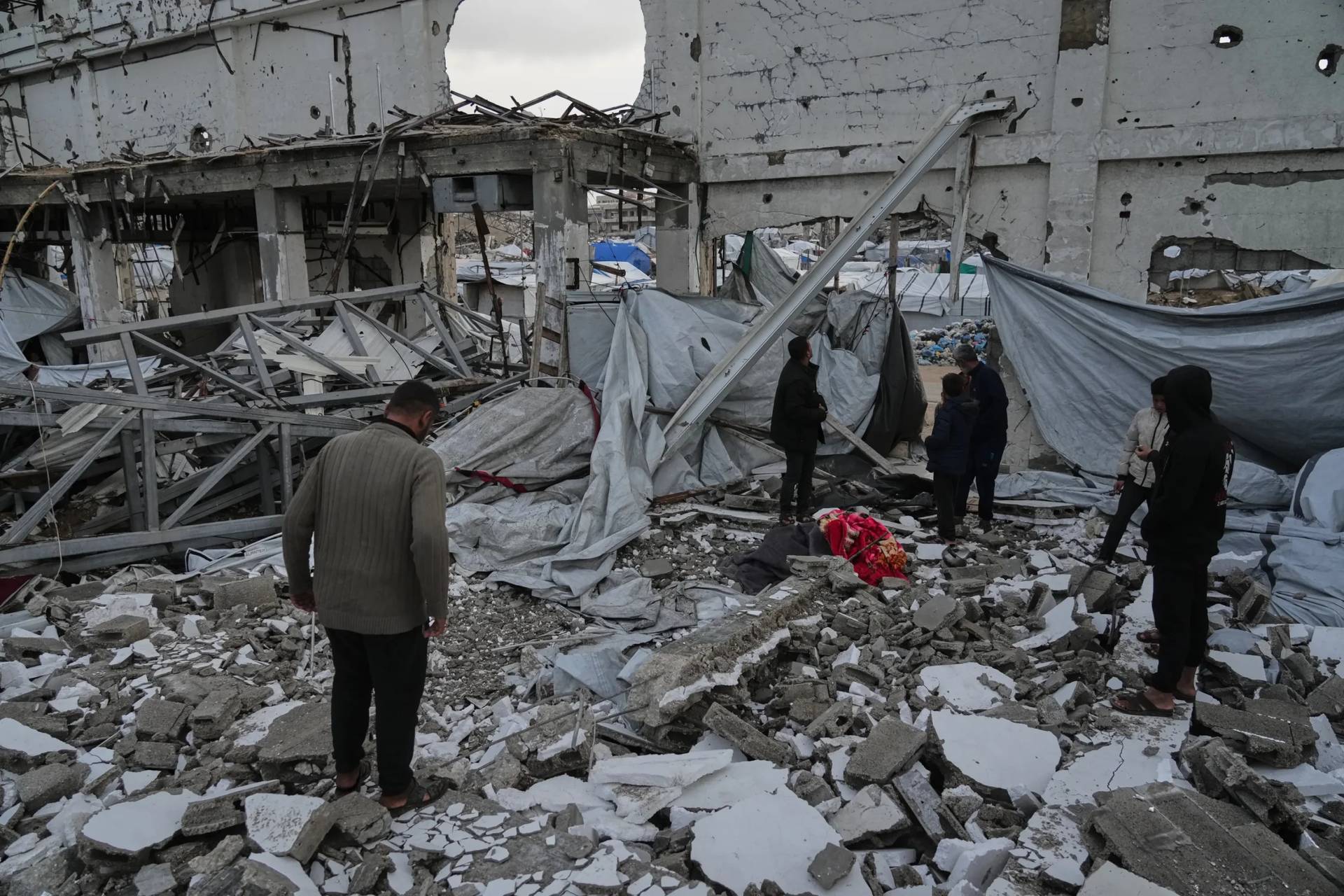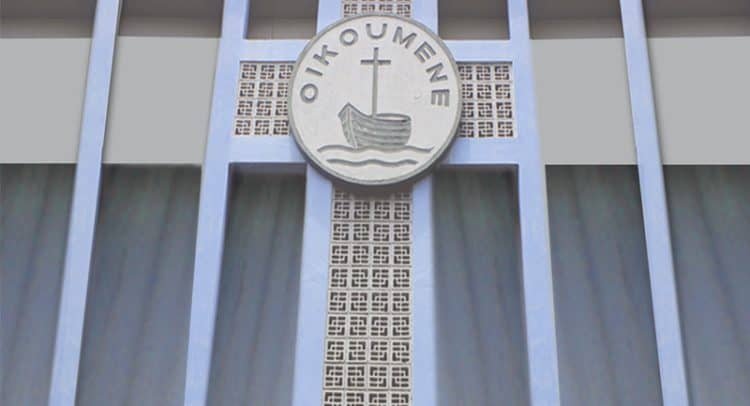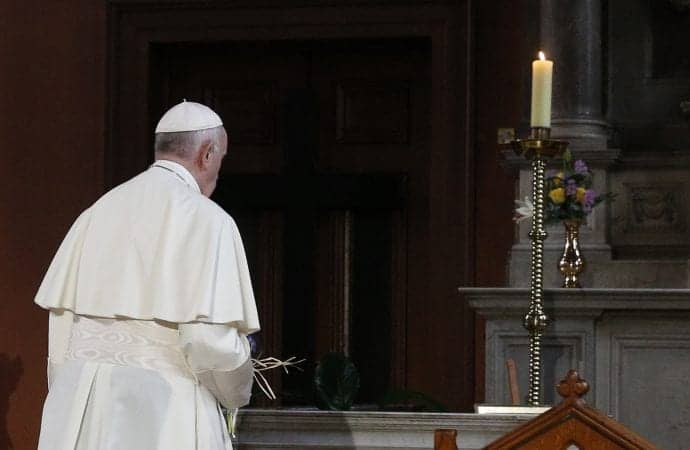KNOCK, Ireland— It’s a commonplace of Catholic spirituality that the most direct route to Christ is through his mother. Hence, amid troubled times both for humanity and within the Church, it comes as no surprise that during his 32-hour trip to Ireland, Pope Francis will come knock, knock, knockin’ on Mary’s door.
He’ll be traveling to the Shrine of Our Lady of Knock on Aug. 26, where tradition has it that on August 21, 1879, the Virgin Mary joined by St. Joseph, St. John the Evangelist and Christ himself, represented as the Lamb of God, all appeared.
Though skeptics might be prone to reduce that belief to just another Irish folk-tale, some 1.5 million yearly pilgrims believe, with the Vatican’s stamp of approval, that it’s all real.
In the century and a half since the apparition, this small town in the north-western part of Ireland, nestled amidst the national highlands once evangelized by St. Patrick, has become the Marian heart of “Catholic Ireland.”
Musing on the faith of the Irish during his visit to the shrine back in 1979, St. John Paul II said that “better than any literary source, it is the constant and deeply rooted devotion to Mary that testifies to the success of evangelization by St. Patrick, who brought you the Catholic faith in all its fullness.”
Since the miraculous event reportedly took place, millions have come flocking to the shrine asking for graces and offering prayers and sacrifices.
“The sick and suffering, people handicapped in body or mind, troubled in their faith or their conscience,” who’ve visited Knock, the Polish pope said, “all have been healed, comforted and confirmed in their faith because they trusted that the Mother of God would lead them to her Son, Jesus.”
Passages of that speech forty years ago easily could be read by Pope Francis today.
“The present time is an important moment in the history of the universal Church, and, in particular, of the Church in Ireland,” John Paul said, referring among other things to the violence devastating the northern part of the island which prevented him from crossing the border.
Today, while the violence is largely in the past, the sectarian and political tensions that shaped the Protestant/Catholic conflict known as “The Troubles” haven’t gone away – evidenced, for instance, in Northern Ireland’s inability to form a national government.
RELATED: Northern Ireland ‘power couple’ says peace has come, not reconciliation
Moreover, Ireland has battled a clerical sexual abuse crisis for a decade now, one which has left an open wound in the faithful that is proving to be almost impossible to heal.
The abuse scandals helped accelerate the rapid secularization of Ireland. Despite the fact that Mass attendance rates here are among the highest in Western Europe, two recent referendums, one on gay marriage and one to legalize abortion, suggest a disconnect between the Catholic faithful and official Church teaching.
Observers have pointed out that Catholics who voted yes on one or both of those referendums did so not only because they don’t agree with the teaching, but also because they don’t think their faith ought to inform public policy in the first place.
Organizers are hoping that Francis’s trip could be a turning point, not only at a grassroots level, but all levels of the Church. If so, it too would build on the legacy of the last papal visit forty years ago.
“So many things have changed. So many valuable new insights have been gained in what it means to be Christian. So many new problems have to be faced by the faithful, either because of the increased pace of change in society, or because of the new demands that are made on the People of God—demands to live to the fullest the mission of evangelization,” John Paul II said.
Francis’s visit to Knock
If Francis is to deliver a shot in the arm to a reeling local church, one logical place for it to happen is certainly his stop in Knock, which the Irish see as “an oasis of peace and reconciliation,” according to Father Richard Gibbons, the local parish priest.
Speaking with Crux on Wednesday, he said that this idea can be explained by the nature of the apparition, which is “very sophisticated.” It’s not only a Marian apparition, he said, but a Eucharistic one, with the Virgin and St. Joseph reportedly appearing together with an altar, the Lamb of God and several saints.
Gibbons noted there was no verbal message delivered by Mary, as is the case with Our Lady of Lourdes and Fatima.
This means that people of all walks of life visit the place, he said, particularly the Reconciliation Chapel, “and feel at peace, that they’re not judged.” The chapel, he said, “is the engine room of the shrine, where people come and feel renewed.”
Francis’s decision to visit the shrine, Gibbons said, is a recognition of not only the pilgrimage site, perhaps the most important in the British Isles, but it’s also a recognition of the people’s own devotion to the Virgin.
While his love for Mary is well-known, Francis is also a big fan of St. Joseph. He keeps an image of a sleeping Joseph in his bedroom, and every night he puts his worries, scrawled on a small slip paper, under the image.
Among the visitors to Knock, Gibbons said, there’s “a little bit of everything,” from those who come in to walk the grounds, as it has 100 acres of “manicured gardens” and who end up attending Mass or going to confession for the first time in years, to strong devotees who tour apparition sites around the world.
Locals agree that the reported apparition in Knock, as well as John Paul II’s visit, helped to reshape the town’s destiny – which, in the late 1800s, was little more than an obscure bogside village in County Mayo.
For instance, the late Monsignor James Horan, the shrine’s parish priest, was instrumental in not only the growth of the basilica but also in the development of the area. He campaigned for an international airport to be set up in Knock, with flights coming from places such as New York and Boston (often en route to Dublin).
According to Gibbons, his successor, Horan will be “smiling down from heaven at the fact that the airport will be used by the greatest pilgrim of our day, Pope Francis.”
He’s also convinced that the papal visit will serve to increase the shrine’s popularity, which he hopes will allow more people to benefit from “the unavoidable sense of peace” he said one experiences when praying here.
















